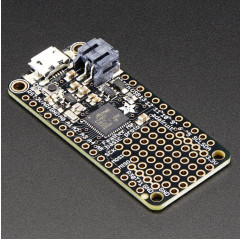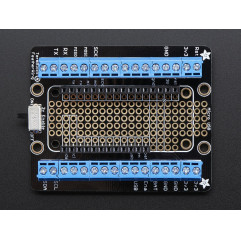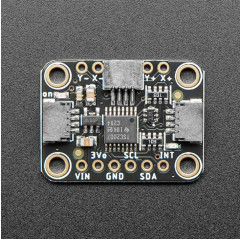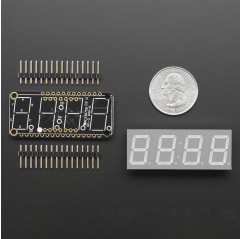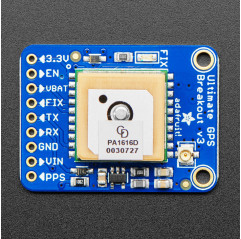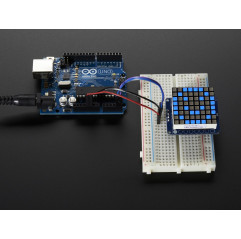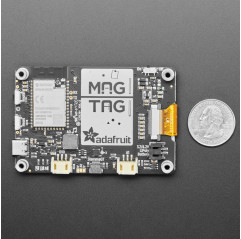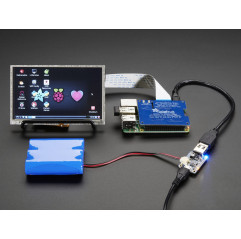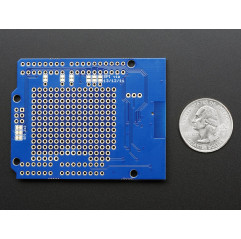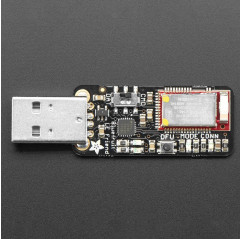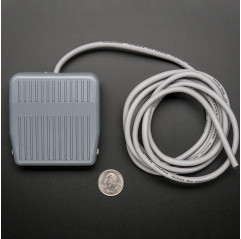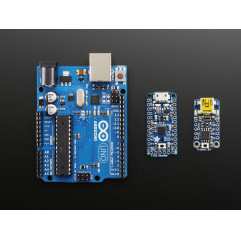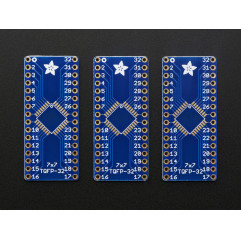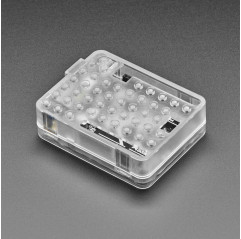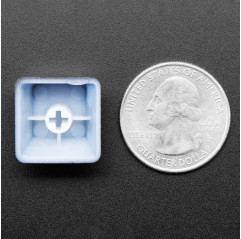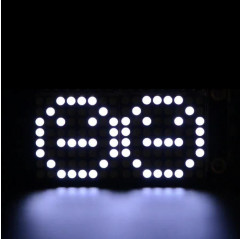Feather is the new development board from Adafruit, and like it's namesake it is thin, light, and lets you fly! This is the Feather M0 Basic Proto, it has a bunch of prototyping space built right in.
We have other boards in the Feather family, check'em out here!
At the Feather M0's heart is an ATSAMD21G18 ARM Cortex M0 processor, clocked at 48 MHz and at 3.3V logic, the same one used in the new Arduino Zero. This chip has a whopping 256K of FLASH (8x more than the Atmega328 or 32u4) and 32K of RAM (16x as much)! This chip comes with built in USB so it has USB-to-Serial program & debug capability built in with no need for an FTDI-like chip.
To make it easy to use for portable projects, Adafruit added a connector for any of their 3.7V Lithium polymer batteries and built in battery charging. You don't need a battery, it will run just fine straight from the micro USB connector. But, if you do have a battery, you can take it on the go, then plug in the USB to recharge. The Feather will automatically switch over to USB power when its available. We also tied the battery thru a divider to an analog pin, so you can measure and monitor the battery voltage to detect when you need a recharge.
Here's some handy specs!
Measures 2.0" x 0.9" x 0.28" (51mm x 23mm x 8mm) without headers soldered in
Light as a (large?) feather - 4.6 grams
ATSAMD21G18 @ 48MHz with 3.3V logic/power
256KB of FLASH + 32KB of RAM
No EEPROM
32.768 KHz crystal for clock generation & RTC
3.3V regulator with 500mA peak current output
USB native support, comes with USB bootloader and serial port debugging
You also get tons of pins - 20 GPIO pins
Hardware Serial, hardware I2C, hardware SPI support
PWM outputs on all pins
6 x 12-bit analog inputs
1 x 10-bit analog ouput (DAC)
Built in 100mA lipoly charger with charging status indicator LED
Pin #13 red LED for general purpose blinking
Power/enable pin
4 mounting holes
Reset button
The Feather M0 Basic Proto has some extra space left over, so we give you a tiny little prototyping area. If you just need to attach a button or sensor, you may be able to skip out on a breadboard and wire it directly on there.
Comes fully assembled and tested, with a USB bootloader that lets you quickly use it with the Arduino IDE. We also toss in some header so you can solder it in and plug into a solderless breadboard. Lipoly battery and USB cable not included
Check out the tutorial for all sorts of details, including schematics, files, IDE instructions, and more!
TECHNICAL DETAILS
51mm x 23mm x 8mm / 2.0" x 0.9" x 0.28"
Weight: 4.6g






